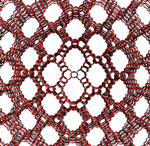The city's new program, funded through property taxes, will allow San Diego homeowners to qualify for financing.
The European Commission's Directorate-General for the Environment has made available a special issue of Science for Environment Policy focusing on environmental communication.
The State of World Population 2009 argues that the fight against climate change is more likely to be successful if policies, programs and treaties take into account the needs, rights and potential of women.
Ryerson, Master and Associates developed a comprehensive carbon footprint for the agency, following extensive analysis to determine the best methodologies for the job.

Two case studies illustrate how companies found in violation of environmental law can offset some of the costs associated with financial penalties.
According to a new report from McGraw-Hill Construction, customer demands and regulatory pressures are driving green building construction.
The shipping company and EPA are optimistic the change will result in lowering emissions at the Port of Houston, Texas and the Port of Progreso, Mexico.
The Methane to Markets program promotes the cost-effective, near-term recovery and use of methane and has 31 partner governments and more than 900 private- sector participants.
Performance contracting, conservation, and shutting down an incinerator are a few of the actions hospital facilities have taken to reduce their environmental footprints.
Houston, Dallas and Las Vegas top the list for most Energy Star homes.
Kansas State engineers are considering algae production in the ocean on very large, supporting platforms.

Professor Michael Deem's team calculates that there are 2.7 million possible structures.
Public policy questions regarding the environmental impacts of biomass have arisen in the wake of recent proposals for four new biomass plants in western Massachusetts.

Rocky Mountain Institute's tool shows architects, engineers, and developers how much their building is contributing to greenhouse gas levels and reveals design targets to achieve carbon neutrality.
The Export-Import Bank of the United States says it wants to help American manufacturers produce green technology for the world.
EPA expects to award about 40 grants of up to $25,000 each for projects that address environmental and public health issues in communities.
GE Energy produces engines that can help dairy farmers generate methane energy.